Every three to four days, someone in the U.S. is killed or injured while changing a tire on the roadside. This stark reality is exactly why we want to walk you through the pros and cons of run flat tires before your next tire purchase.
Run flat tires give you the ability to keep driving up to 50 miles at speeds of 50 mph even after a puncture. What makes this possible? Their ultra-stiff sidewalls are engineered to support your vehicle's weight without any air pressure. The catch? You'll pay 25-50% more than regular tires, with prices typically running $150 to $500 per tire. These specialized tires deliver 30,000 to 50,000 miles under normal conditions, but they actually wear out faster than conventional tires—about 6,000 fewer miles according to J.D. Power.
We've put together this guide to help you figure out whether run flat tires make sense for your vehicle in 2025. You'll get the straight facts about their unique construction, how they stack up against regular tires, and seven key factors that will affect both your driving experience and your wallet.
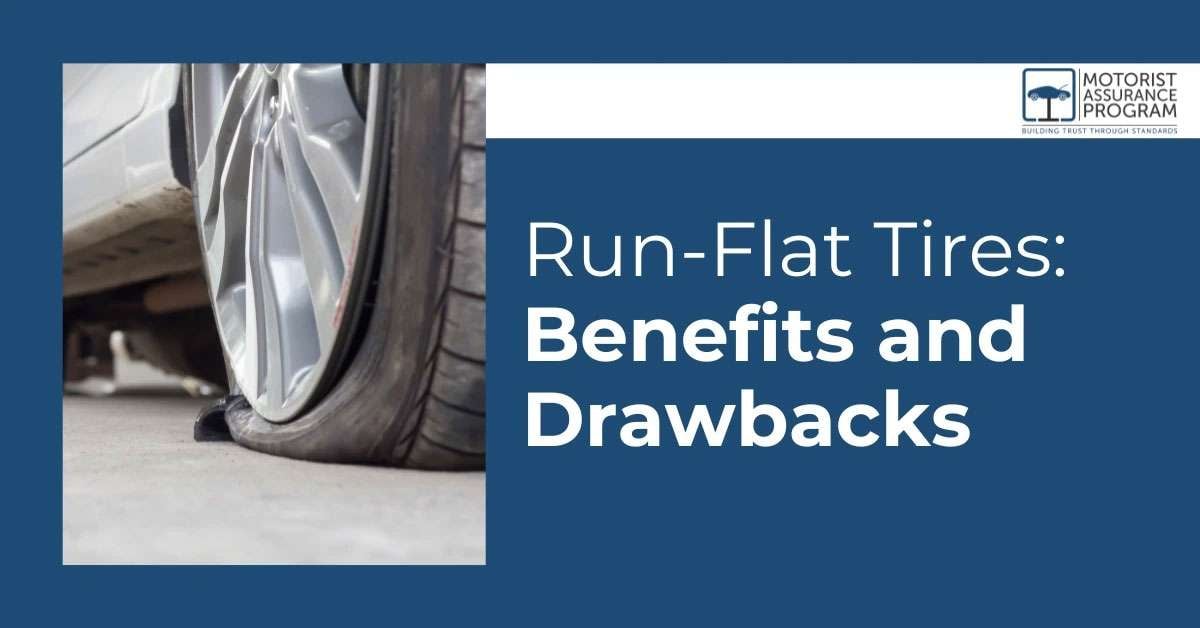
Image Source: Motorist Assurance Program
Getting rid of your spare tire might sound risky, but run-flat tires make it practical and smart. This technology offers space-saving benefits that many drivers don't fully appreciate until they see the difference in their own vehicle.
Run-flat tires are engineered with reinforced sidewalls designed to support your vehicle's weight even after complete air pressure loss. When regular tires get punctured, they collapse instantly. Run-flats keep their shape and let you drive safely for a limited distance.
Here's what makes them work: those sidewalls are approximately ¾-inch thick—nearly six times thicker than the ⅛-inch sidewalls you'll find on standard tires. The construction uses specialized rubber compounds, heat-resistant cords, and supportive inserts that team up to maintain the tire's shape and function even when air pressure drops to zero.
You'll encounter two main types of run-flat technology. The most common version uses those reinforced sidewalls to physically support your vehicle's weight after pressure loss. The second type, called self-sealing tires, contains special materials that expand to fill small punctures, slowing down air loss.
The difference becomes clear when you compare what happens during a puncture. Regular tires lose air and can't support your vehicle anymore. Run-flats keep supporting your vehicle with their reinforced structure, helping you maintain stability and control.
No spare tire means no spare tire, jack, or tire-changing tools taking up space in your trunk. Open your trunk and you'll immediately notice the difference.
Vehicles with run-flat tires typically come without a spare tire assembly, giving you back valuable cargo space. Think about it—a typical spare tire, wheel, jack, and tools can eat up a significant chunk of your trunk. Without these rarely-used items, manufacturers can design vehicles with more practical storage capacity.
Removing the spare tire assembly also cuts vehicle weight meaningfully. Many spare tires end up in junkyards without ever being used, so this weight reduction makes sense from both engineering and environmental angles.
Better fuel efficiency comes as another bonus. Automakers face pressure to maximize fuel economy, making weight reduction a priority. Even small weight savings can add up to noticeable improvements in miles per gallon over your vehicle's lifetime.
Run-flat tires have become increasingly relevant as vehicle design changes. Electric vehicles especially benefit from this technology. Many EVs don't include spare tires because that space goes to battery systems. Several manufacturers now make run-flat tires standard on their electric models.
Run-flat tires also deliver a safety advantage that fits modern driving needs. These tires help you maintain control during a blowout, making it easier to reach a service station or safe location without stopping on busy highways or in dangerous areas. This proves especially valuable when tire repair services aren't readily available, like in remote locations or during late-night drives.
The technology shows promise for future transportation too. Run-flat tires could become essential for autonomous vehicles, helping self-driving systems manage tire failures safely without human intervention.
Run-flat tires first appeared in the mid-1980s when Bridgestone introduced an early version for the 1987 Porsche 959, but they've evolved significantly since then. Today, they're increasingly common as standard equipment on new vehicles from premium manufacturers like BMW, the largest adopter of run-flat technology as original equipment.
Market adoption has been slow but steady. Run-flat tires made up less than 1% of replacement tire sales in the United States in 2005, and a 2008 Michelin study found only 3% of drivers worldwide showed interest in them. Still, as consumers continue prioritizing safety features, industry experts expect run-flat tire popularity to grow.
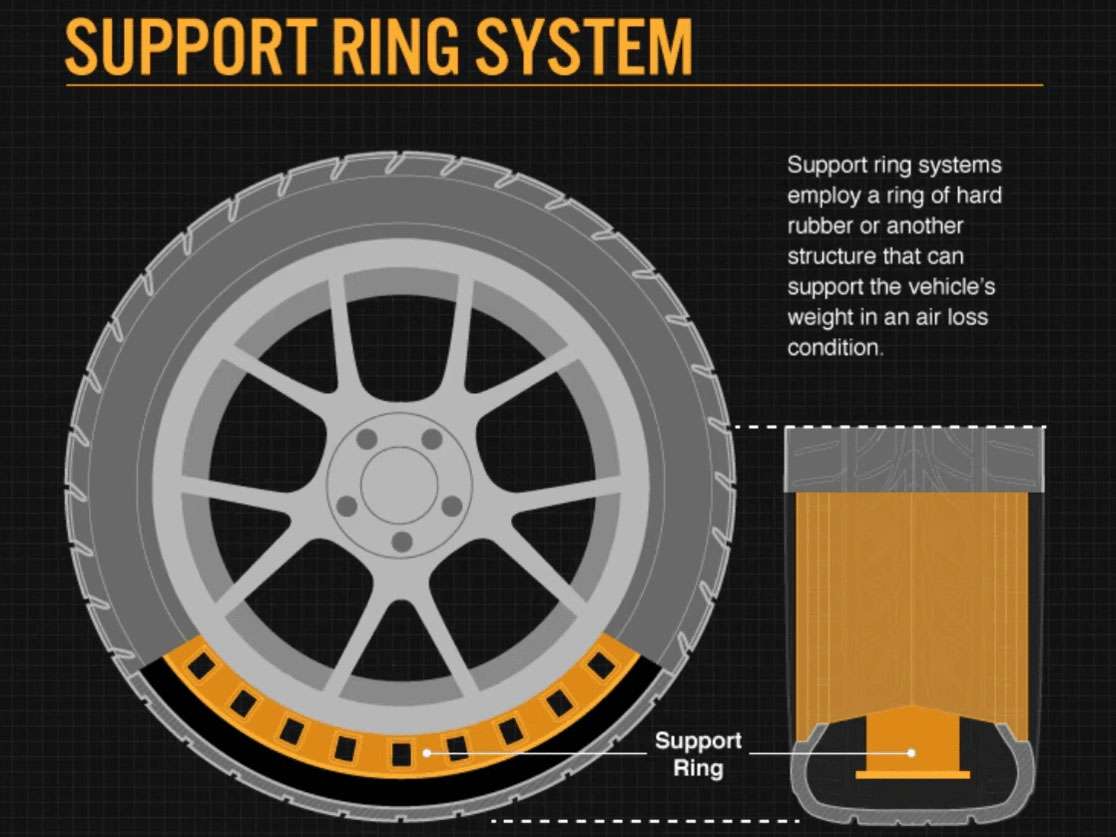
Image Source: www.icartea.com
Picture this: you're cruising down the highway when you hear that dreaded sound of a tire blowout. With run-flat tires, that moment of panic becomes something you can actually handle. These specialized tires let you keep driving even after losing all air pressure—a feature that can be a real lifesaver in tough situations.
When a run-flat tire gets punctured, those reinforced sidewalls we talked about earlier immediately step up to do the heavy lifting. While regular tires would collapse under your car's weight, run-flats hold their shape thanks to their beefed-up rubber compounds and extra-thick sidewall construction.
What really sets them apart is how much better they handle during a puncture situation. Since they're built specifically to support your vehicle without air, you'll have much better control of your car after losing pressure. This stability difference really shows during emergency situations, where keeping control of your vehicle can mean the difference between a minor inconvenience and a serious accident.
Here's something important: run-flat tires need to work with a Tire Pressure Monitoring System (TPMS) that alerts you when one or more tires drop 25% below their recommended pressure. When that warning light comes on, it's your signal that you're now in extended mobility mode and need to adjust how you drive.
While run-flat tires give you that crucial mobility after a puncture, they come with some strict rules. The big one: don't drive faster than 50 mph on a deflated run-flat. Push it beyond that speed and you'll generate too much heat, which can cause permanent damage to the tire and potentially lead to a complete failure.
Distance-wise, most run-flat tires let you travel about 50 miles after losing pressure. Several factors can affect how far you can actually go:
How much weight your vehicle is carrying
Outside temperature
Which tire is flat
Road conditions and surface quality
Depending on your specific vehicle and run-flat design, you might get anywhere from 25 miles to 200 miles. Check your owner's manual for the exact specs on your tires.
Once you're driving on a deflated run-flat, your car won't handle the same way. Avoid hard acceleration, sharp turns, and sudden braking. And definitely don't try towing anything or carrying heavy loads—that's asking for trouble.
The ability to keep driving after a puncture proves its worth in plenty of real-world scenarios. Most importantly, it gets you out of having to change a tire on the roadside—remember, someone gets hurt or killed doing this every few days.
Think about being on a busy stretch like I-75 between Macon and Atlanta when you suddenly hear that telltale noise and feel your car pulling. Instead of trying to pull over onto a narrow shoulder with traffic flying by at 80 mph, run-flats let you drive to a safer spot or service station.
These tires really shine in challenging situations:
Bad weather when changing a tire would be dangerous
Sketchy neighborhoods or isolated areas, especially at night
Remote areas where cell service is spotty
For drivers who physically can't change a tire
One driver told us about getting a puncture on a busy highway but being able to maintain control and safely make it to the nearest service station, avoiding what could have been a dangerous roadside situation.
Even in city driving, this technology proves useful. A commuter in a major metropolitan area got a puncture during rush hour traffic and was able to finish their trip and deal with the tire later, rather than trying to change it in heavy traffic.
Keep in mind that after driving on a deflated run-flat, most manufacturers say you need to replace the tire rather than repair it. That's because run-flats driven with low or no air pressure may have internal damage that you can't see, even with professional inspection.
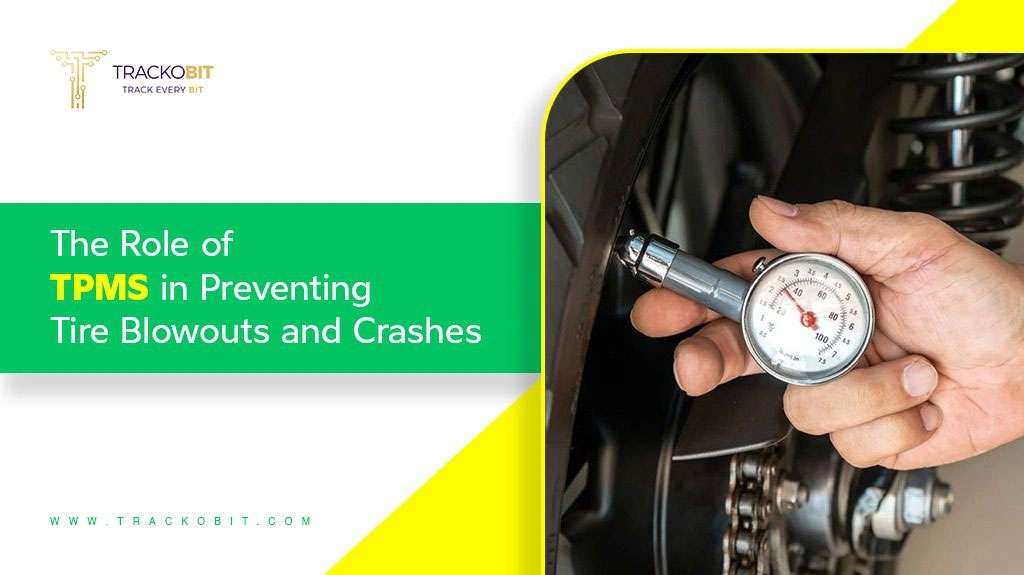
Image Source: White Label GPS Tracking Software
Safety becomes everything when you're dealing with a tire emergency on the road. Run-flat tires deliver protection that goes well beyond convenience—they're a genuine safety feature that could prevent accidents and potentially save lives.
Tire blowouts rank among the most dangerous tire-related emergencies you can face. With conventional tires, drivers often lose control immediately when a blowout occurs, leading to serious accidents. Run-flat tires change this dangerous equation entirely.
The ultra-stiff sidewall construction gives run-flat tires substantially more stability than conventional tires during a puncture situation. This reinforced structure stops the tire from collapsing or separating from the rim when pressure disappears. The result? You keep better control of your vehicle even after losing all air pressure.
This stability advantage becomes critical during high-stress driving situations. The self-supporting structure allows run-flat tires to maintain their shape and keep performing under your vehicle's load without any air pressure. This structural strength helps reduce the risk of sudden blowouts, which can be especially dangerous at highway speeds.
Run-flat tires also demonstrate their value through accident prevention. Their design minimizes the risk of sudden deflation that commonly causes drivers to lose control. Rather than experiencing an abrupt collapse, the tire gradually loses performance while still supporting your vehicle's weight.
Tire Pressure Monitoring Systems (TPMS) work hand-in-hand with run-flat tires. All run-flat tires, regardless of the specific system type, can only be used on vehicles equipped with TPMS.
The federal government recognized how important this technology is by requiring TPMS on all passenger cars starting in late 2007. These systems show warnings about low tire pressure on your vehicle's instrument cluster, alerting you immediately when pressure drops.
This early warning capability matters because you might not realize you're driving on a deflated run-flat tire otherwise. Without the visible sagging that happens with conventional tires, TPMS becomes your main indicator that something's wrong.
Most vehicles with run-flat tires use either a basic warning system with a single light or more advanced systems that display individual tire pressures. When you get a TPMS alert showing pressure loss, stay calm and avoid sudden maneuvers.
The system serves as your first line of defense, giving you time to react properly and plan your next steps, whether that means continuing to your destination or finding the nearest service center.
Highway driving creates unique safety challenges that make run-flat tires particularly valuable. Someone is killed or injured every three to four days in the United States while trying to change a tire on the roadside. This sobering statistic shows just how dangerous roadside tire changes can be.
Picture this: you're driving on Interstate 75 between Macon and Atlanta when you experience a tire failure. Without run-flat technology, you'd need to pull over onto the shoulder while traffic flies by at 80 mph—a scary and dangerous situation. Run-flat tires eliminate this hazard by letting you continue driving to a safer location.
The safety benefits extend beyond avoiding roadside stops. When a sudden tire failure happens at highway speeds, maintaining control becomes everything. Run-flat tires help prevent the loss of control that often comes with conventional tire failures, giving you precious seconds to safely maneuver your vehicle.
This technology proves especially valuable in several challenging highway scenarios:
During poor weather conditions when stopping is particularly dangerous
In high-traffic areas where shoulder space is limited
At night when visibility is reduced
On remote stretches where help may be far away
For autonomous vehicles of the future, run-flat tires could play a critical safety role by helping these self-driving systems safely manage tire failures without human intervention.
Even with these benefits, run-flat tires have limitations. After experiencing a puncture, you should drive cautiously—avoiding sudden accelerations, sharp turns, and hard braking that can strain the damaged tire.
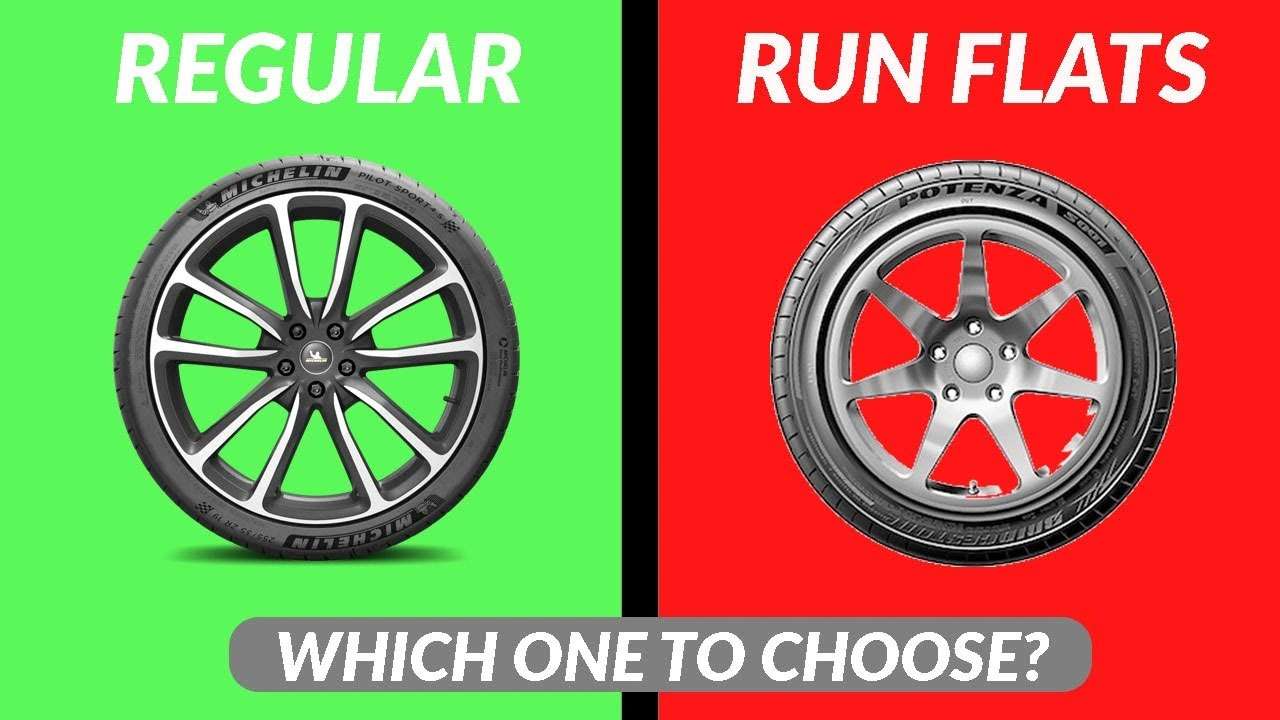
Image Source: YouTube
The impressive safety features of run-flat tires come with a noticeable trade-off in ride quality. Those same reinforced sidewalls that keep you moving after a puncture also change how your tires handle the road surface under your wheels.
Here's where the engineering reality hits you: run-flat tires have sidewalls about ¾-inch thick—nearly six times thicker than the ⅛-inch sidewalls on standard tires. This massive difference isn't just a number on a spec sheet—you'll feel it every time you drive.
Those ultra-stiff sidewalls do exactly what they're designed to do: support your vehicle after a puncture. But that same rigidity means they can't flex and absorb road bumps the way conventional tires do. Think of it like the difference between a firm mattress and a soft one—both work, but they feel completely different.
The reinforced construction serves two purposes: preventing collapse when you lose air pressure and protecting against heat buildup. Unfortunately, this creates a comfort compromise that tire engineers haven't been able to eliminate, even with all the advances in tire technology.
You'll notice the stiffer construction right away, especially if you're coming from conventional tires. The firmer ride quality becomes obvious when you're driving over:
Rough city streets with potholes and cracks
Highway expansion joints
Patched asphalt surfaces
Speed bumps and driveway entrances
Road noise is another issue that shows up, particularly as the tires age. Many owners describe hearing a persistent "drone" or even "truck-like" noise at highway speeds. This can be especially noticeable from the back seats, which might take away from the premium feel you expect in a luxury vehicle.
Your vehicle's handling characteristics shift too. Some drivers find their cars feel less responsive and agile, particularly when cornering or making quick maneuvers. The tire's rigid structure simply can't flex and grip the road the same way conventional tires do.
There's also the fuel economy factor. The extra weight and rolling resistance of run-flat tires can hurt your gas mileage. The impact varies depending on your vehicle and how you drive, but it's something to consider when you're weighing the overall value.
The comfort difference really stands out when you hit imperfect road surfaces. Regular tires, with their more flexible sidewalls, naturally absorb minor road imperfections, keeping passengers isolated from jolts and vibrations that run-flats tend to send right into the cabin.
This gets even more noticeable with larger wheels. Vehicles with 20-inch or 21-inch wheels paired with run-flat tires often deliver an especially firm ride. You're dealing with low-profile tires and run-flat technology together, which means there's very little rubber available to absorb impacts.
The comfort gap becomes most obvious in these situations:
When both front tires hit road cracks at the same time
During low-speed city driving over rough surfaces
In vehicles with sport-tuned suspensions that already prioritize handling over comfort
How much this matters depends on what you value most. Drivers who want a smooth, quiet ride might find run-flat tires disappointing. Others decide the safety benefits and convenience features are worth the comfort trade-off.
Many drivers who switch from run-flat to conventional tires notice an immediate improvement in ride quality, with less noise and better absorption of road imperfections. One BMW owner who made the switch put it this way: "The non-run-flats are quieter, smoother, potholes and expansion joints are not as jolting".
This comfort difference is actually one reason why some manufacturers now offer conventional tires as alternatives on vehicles originally equipped with run-flats. They recognize that different drivers prioritize different aspects of tire performance.
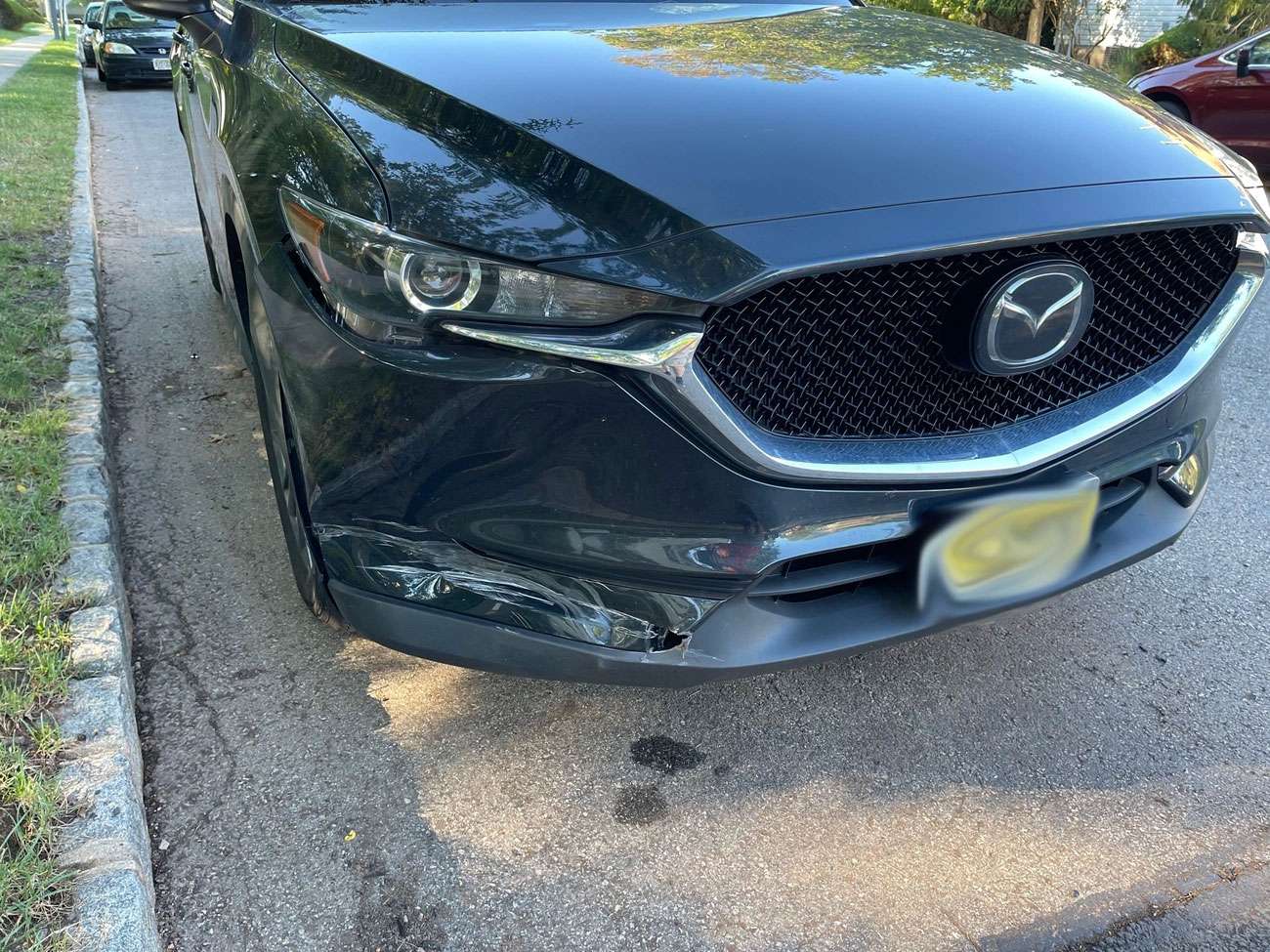
Image Source: Reddit
The sticker shock hits most drivers when they need to replace run-flat tires. Your wallet will definitely feel the difference compared to conventional tires, and this cost impact stretches well beyond the initial purchase.
Run-flat tires will set you back anywhere from $150 to $500 per tire, depending on your vehicle make, model, and tire size. Got a Honda Accord or Toyota Camry? You're looking at around $150-$200 per tire. Drive an SUV or luxury vehicle? Prepare for $250-$500 per tire—sometimes even more.
Here's the reality: run-flat tires cost 25-50% more than regular tires for the same vehicle. This price gap stays pretty consistent whether you're shopping Bridgestone, Michelin, Continental, or Pirelli.
There's another cost factor many people miss. Run-flat tires often need specialized mounting equipment and know-how, which can bump up your service fees at tire shops. Not every shop has the right tools or training to handle these tires properly.
The higher price tag comes down to several key factors:
Advanced materials and engineering - Those reinforced sidewalls need specialized rubber compounds and support systems that drive up manufacturing costs significantly.
Research and development investment - Tire manufacturers pour serious money into developing run-flat technology that balances safety with decent ride quality.
Lower production volumes - Run-flats are specialty products with smaller market demand, so they don't get the same cost benefits from mass production.
Specialized testing requirements - These tires go through extra testing to make sure they work safely after air loss, adding to development expenses.
Bottom line: run-flat technology simply requires more materials per tire, making production costs higher no matter what.
The financial hit doesn't stop at the initial purchase. Run-flat tires typically wear out faster than conventional tires—about 6,000 fewer miles on average according to experts.
Here's where it gets expensive: many tire shops won't repair punctured run-flat tires because of potential hidden damage you can't see. That means full replacement instead of a $20-$30 patch that might fix a regular tire.
Add it all up, and the lifetime cost difference becomes pretty significant. Keep your vehicle for 5-7 years, and you might end up buying an extra set of run-flat tires compared to conventional ones. That could easily add $1,000+ to your total maintenance costs.
Some owners still think it's worth it. The peace of mind from avoiding roadside tire changes, not getting stranded, and having better safety during blowouts can justify the premium pricing for many drivers.
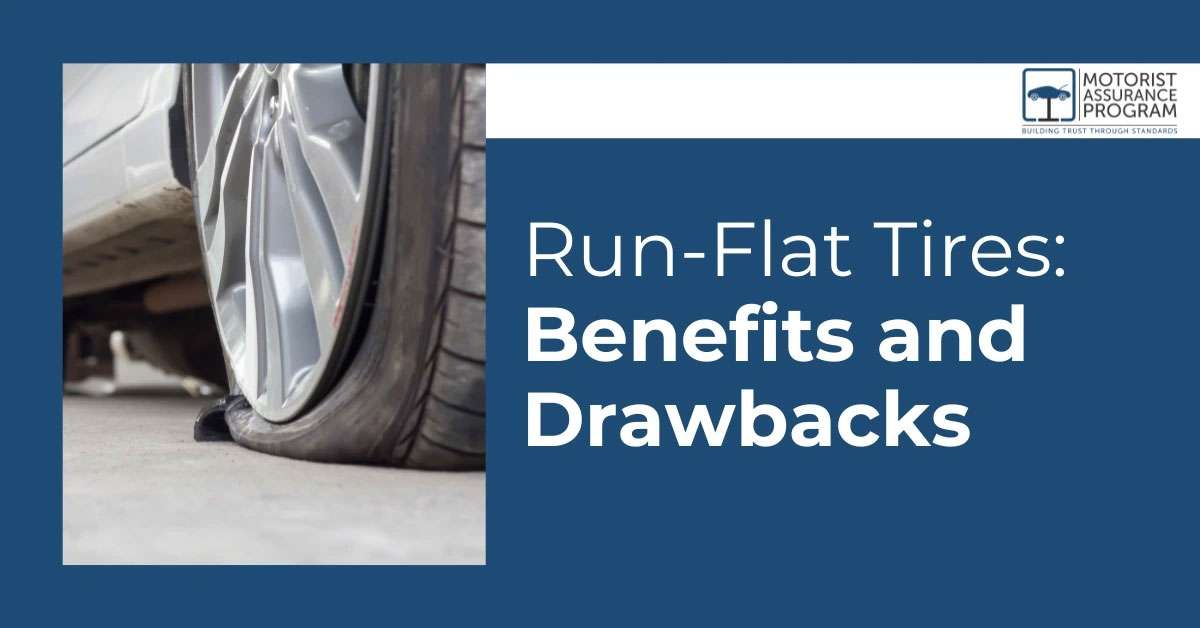
Image Source: Motorist Assurance Program
Finding replacement run-flat tires can turn into a real headache, especially when you need them most. Their specialized nature means you won't find the same variety and availability that regular tires offer.
Run-flat tires make up only a small slice of the thousands of tire types manufactured today. Tire makers produce fewer run-flat variants simply because demand hasn't caught up with regular tires. This creates a supply challenge that becomes obvious the moment you need a replacement.
The aftermarket for run-flats is growing as more drivers make the switch, but their specialized construction and materials still create production bottlenecks. You might not notice this limitation if you live in a major city with well-stocked tire centers, but try finding a specific size for a newer vehicle or uncommon application—that's when the limited selection hits you.
Rural areas present the biggest challenge for run-flat availability. Many tire shops in smaller towns simply don't carry specialized run-flat sizes and brands. These retailers often avoid stocking run-flats because of their higher prices and slower turnover.
BMW owners and other luxury vehicle drivers face a particular challenge when traveling through less populated regions. Even if you find a shop that can help, they might lack the specialized equipment and training needed for proper run-flat installation and maintenance.
A puncture in a remote area could leave you waiting longer than expected, which defeats the whole purpose of having "always mobile" tires.
When you can't find the run-flat you need, here are some practical options:
Plan ahead for long trips by researching tire shops along your route that carry your specific run-flat model
Be prepared to wait one to three days for special orders—this waiting period happens even in larger cities
Consider temporary conventional tire substitution if absolutely necessary, though this removes the run-flat safety benefits
Contact the vehicle manufacturer's roadside assistance as they may have better access to appropriate replacements
Some vehicles can't safely switch to regular tires, making run-flat replacements mandatory. If you travel extensively through remote areas, this availability limitation deserves serious consideration when weighing your tire options.
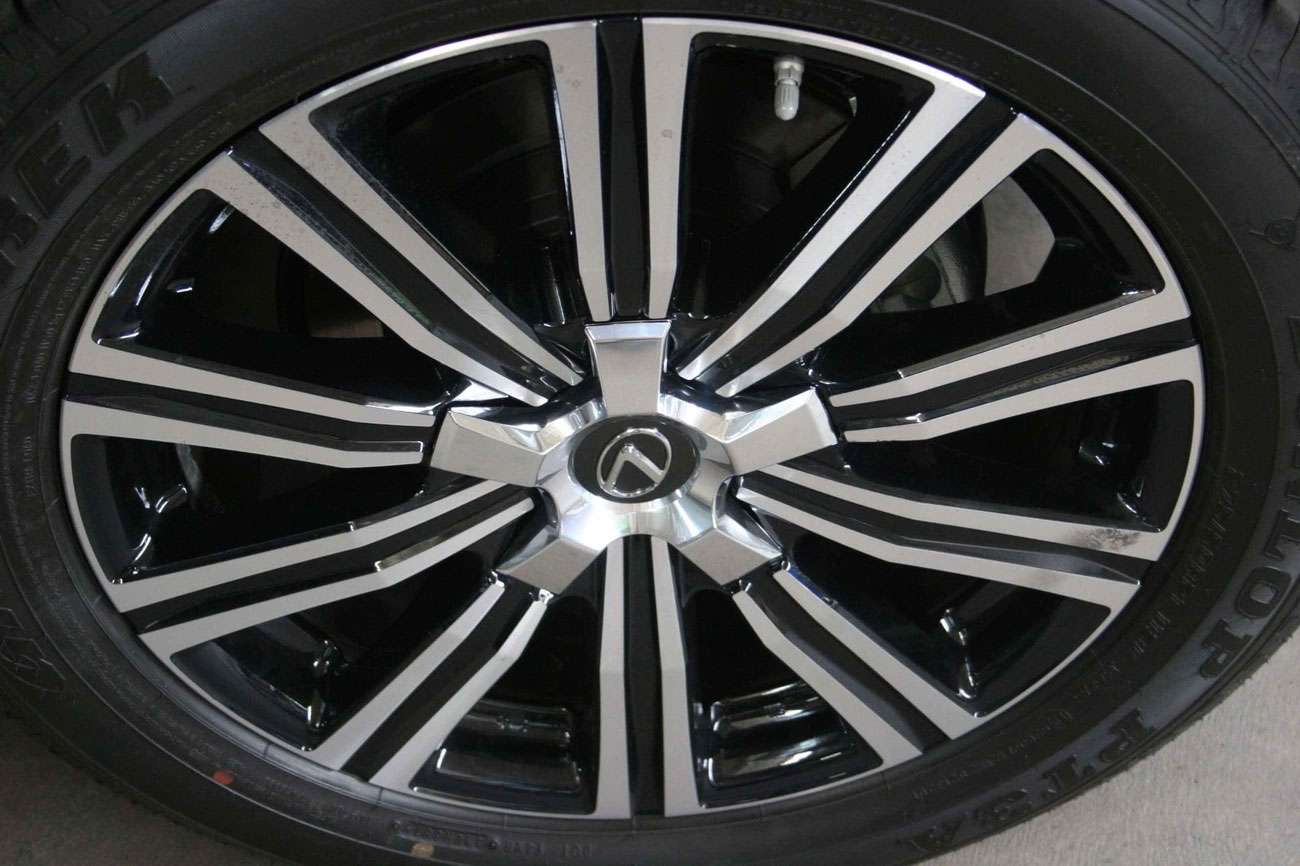
Image Source: Armormax
Here's where things get tricky with run-flat tires. While regular tires can often be patched up and put back into service, run-flat technology comes with some repair challenges that'll affect your wallet over time.
The same tough construction that makes run-flat tires work against you here. Those ultra-rigid sidewalls we talked about? They can pick up hidden damage when you drive on low or no air pressure. This invisible damage often can't be spotted even when a professional takes a look, but it can still weaken the tire's integrity.
There's also the matter of those specialized rubber compounds. They don't always play nice with standard repair methods the way regular tire materials do. Once you get a puncture, the tire's internal parts might develop tiny tears that spread beyond what you can see on the surface.
Most tire shops will turn down repair jobs on run-flat tires, and it comes down to liability issues. Tire manufacturers often put warnings right in their technical docs saying don't repair these specialized tires. That puts shops in a tough spot when it comes to warranty and safety concerns.
There's also an equipment issue. Many shops don't have the specialized gear needed to properly check and repair run-flat tires. The reinforced sidewall construction needs different handling than standard tires, and not many technicians get specific training for run-flat repair work.
You'll need a complete replacement in several situations:
After driving on a completely deflated run-flat for any distance
When punctures happen in or near the sidewall rather than the tread
If the puncture is bigger than 1/4 inch across
When the tire shows visible bulging or uneven wear patterns
What this means for your budget? A simple $25 patch job for a regular tire turns into a several-hundred-dollar replacement for run-flat owners. This repair limitation adds to the already higher purchase price, making your total ownership costs significantly higher over your vehicle's life.
List Item | Key Feature/Impact | Primary Benefit/Drawback | Specific Limitations/Considerations | Cost/Value Impact |
Eliminate Need for Spare | Ultra-stiff sidewalls about ¾-inch thick | More trunk space and lighter car | You'll need TPMS system installed | Better gas mileage from weight savings |
Drive After Puncture | Keep going up to 50 miles after puncture | Your car stays stable when tire goes flat | Can't drive faster than 50 mph | Whole tire usually needs replacing afterward |
Enhanced Safety | Stops tire from collapsing suddenly | You keep control when tire blows out | Only works with TPMS system | Fewer dangerous roadside stops |
Ride Comfort Impact | Much stiffer sidewalls | Rougher, bumpier ride | More road noise and less responsive feel | Changes how your car handles |
Expensive Replacement | Cost 25-50% more than regular tires | $150-$500 per tire price range | Wear out 6,000 miles sooner | Higher costs over time |
Limited Availability | Not as common in tire shops | Fewer choices than regular tires | Hard to find in small towns | May need to wait for special orders |
Limited Repairability | Usually can't be patched up | Most shops won't fix them | Must replace if driven while flat | Adds to your long-term tire costs |
The decision about run-flat tires really comes down to what matters most in your specific driving situation. These tires deliver genuine safety benefits—you can keep driving after a puncture instead of pulling over on dangerous roadsides. Plus, you get that extra trunk space without the spare tire taking up room.
But there are real trade-offs to consider. The ride gets noticeably harsher, and you'll pay more upfront and over time. Finding replacements can be tricky, especially if you travel through smaller towns, and most shops won't repair them—they'll want to replace the whole tire.
Run-flat tires work best for drivers who put safety first and don't mind paying extra for peace of mind. They're great if you spend a lot of time on busy highways, drive at night regularly, or just don't want to deal with changing tires. On the other hand, if you're watching your budget closely or frequently drive through rural areas, regular tires might serve you better.
Take an honest look at your driving patterns before you decide. There's no single "right" answer here—both types of tires have their place depending on what you need. The basic trade-offs between safety, comfort, and cost aren't going anywhere, so pick the option that fits your priorities best.
Run-flat tires offer compelling safety benefits but come with significant trade-offs that every driver should understand before making the investment.
• Run-flat tires eliminate roadside tire changes by allowing you to drive up to 50 miles at 50 mph after a puncture, providing crucial safety benefits and freeing up trunk space.
• Enhanced emergency safety comes at a comfort cost - the ultra-stiff sidewalls that prevent blowouts also create a harsher, noisier ride compared to conventional tires.
• Expect 25-50% higher costs throughout ownership - run-flats cost $150-$500 per tire, last 6,000 fewer miles, and typically require full replacement rather than repairs.
• Limited availability and repairability create practical challenges - fewer options exist in rural areas, and most shops won't patch punctured run-flats due to potential hidden damage.
• Best suited for safety-focused drivers who frequently travel busy highways or lack physical ability to change tires, while budget-conscious drivers may prefer conventional alternatives.
The decision ultimately depends on whether you prioritize emergency mobility and safety over ride comfort and long-term costs. Consider your typical driving conditions, budget constraints, and personal safety concerns when weighing these specialized tires against conventional options.
Q1. What are the main advantages of run-flat tires? Run-flat tires allow you to continue driving for up to 50 miles at 50 mph after a puncture, eliminating the need for roadside tire changes. They also free up trunk space by removing the need for a spare tire and provide enhanced stability during blowouts.
Q2. How do run-flat tires affect ride comfort? Run-flat tires typically provide a firmer, less comfortable ride compared to conventional tires due to their ultra-stiff sidewalls. Many drivers report increased road noise and reduced responsiveness, especially noticeable on rough roads or over bumps.
Q3. Are run-flat tires more expensive than regular tires? Yes, run-flat tires generally cost 25-50% more than conventional tires, ranging from $150 to $500 per tire depending on the vehicle. They also tend to have a shorter lifespan, potentially increasing long-term ownership costs.
Q4. Can run-flat tires be repaired after a puncture? In most cases, run-flat tires cannot be repaired after a puncture. Many tire shops refuse to patch them due to potential hidden structural damage, often necessitating complete replacement even for minor punctures.
Q5. How long do run-flat tires typically last? Run-flat tires usually last between 30,000 to 50,000 miles under normal conditions. However, they tend to have a shorter lifespan compared to conventional tires, with some estimates suggesting they may last about 6,000 fewer miles on average.
